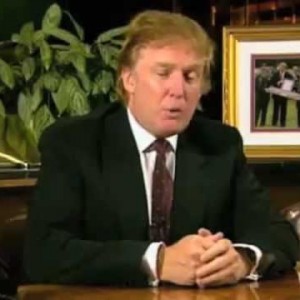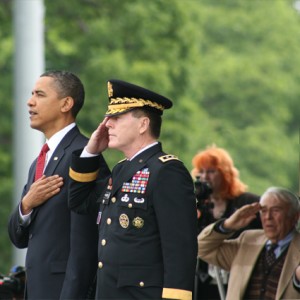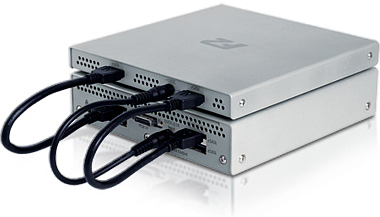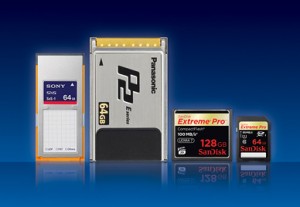Back in the late ’80s our firm was honored to be invited to create a series of surgical videos at the Texas Heart Institute with renowned surgeons Denton Cooley, MD, O.H. “Bud” Frazier and others.
Today, we are in the process of restoring, editing and uploading these videos to YouTube, where both lay and professional audiences enjoy seeing such historic procedures as heart transplants, mitral valve replacements, cardiac oncology, etc.
If you wish to see these videos, they are available on the Avekta YouTube Channel. Enjoy.
One of our “fans,” a surgeon in Eastern Europe, wrote with a lot of unusual questions that caused me to recollect many interesting moments that I shared with him. I thought they might be of interest to you, our website visitor. So here is a mildly edited version of that late-night exchange.
Dear George.
I’m sorry that I’m taking you time. As I wrote you once I am very interested in a heart transplant and the construction of an artificial heart I just have one question about your memories when you worked in Houston. Did Dr. Frazier only do heart transplants and by-pass operation in 80’s when you worked there?
Chris – I will answer your questions within the body of your text – see below.
At that time both Dr. Cooley and Dr. Frazier were doing heart transplants. There would be about one transplant a week – although we did not have much luck and had to wait over three weeks to film ours. During that time both doctors did other CT operations.
Is Dr. Frazier doing all heart operations during a day? Is he doing operations thoracic aortic aneurysms?
Yes, but I did not film any.
How was his daily schedule when he doing heart transplant all night?
There was usually a maximum four hour advance notice on transplants since at that time, 4 hours was the limit of how long the allograph would remain viable. Assuming a donor was harvested at say 2200 hrs, it is possible the operation would run all night and there is always several crews available on call 24/7/365. During our filming, we wore beepers and were on the same call list as the doctors and nurses.
Did Dr. Frazier operate together with Dr. Cooley or separately?
I do not recall them working together, but it was certainly possible. The work arrangements at THI were very flexible. The ORs are constructed like honeycombs – eight to a cluster, with an octagonal nursing station in the center of the cluster. In this way, the support staff could enter any of 8 ORs with minimal sterile procedures and maximum speed. Usually “fellows” would do the opening and closing and the surgeons would enter the OR only to perform the most critical work. Once done, the surgeon would back away from the table, shoot his gloves into the trash, raise his hands, back out of the room, call for a regown if necessary, reglove and move into the next procedure. The nursing staff would try to keep the surgeons as continuously working as possible and Cooley, for one, did not rest unless it was absolutely unavoidable. His lunch consisted of a yoghurt and water, taken in his surgical office, which was just off the honeycomb of ORs. In the office, he had a bank of video monitors, each with a different OR under observance.
What was it like in the Texas Heart Institute. I am very interested because in the 80’s they performed 5,000 operations a year.
I recall that Cooley did 8-12 procedures a day. Late one afternoon, he was kind enough to allow me to shoot some specific scenes of him scrubbing up and going through doors etc. Each shot took a few rehearsals and “takes,” so when I was done, I thanked him and, assuming he was at the end of his day, I wished him a good evening’s rest. He replied, “I only rest when I’m sick. And I’m never sick.” I assume he went on operating into the night, but I needed rest, so I left and went to my hotel!
You were working at the time with Cooley and Frazier. What was it like working with Dr. Frazier, who is the head of the heart transplant program.
I recall Dr. Frazier had a great sense of humor and like to listen to different kinds of music (not always classical – the favorite of surgeons) when working. Often he would start to talk to me while operating and it was usually a serious comment that suckered me into participating in a joke. For instance, once he said, “George – you know, we aren’t using rats in the experimental lab any more.” I was shocked that he would address me in the middle of a procedure, so while recovering from that I was not aware that he was playing me, so I said, “You don’t say.” And he went on to explain that instead of rats, they were using lawyers. “You see, we found out there are more lawyers than rats. And the staff are not as emotionally attached to lawyers as to rats. Finally, there are some things that even rats won’t do.” I had a hard time holding the camera steady, because that was in the ’80s when lawyer jokes – especially doctor-lawyer jokes, were really new.
Is he worked harder and longer than other doctors. Is Dr. Cooley and Frazier were the best surgeons in the Texas Heart Institute?
I would have no way to determine an answer to either of these questions. I am just a filmmaker. I will tell you that the fellows – young surgeons who were learning while working – were in awe of all the senior surgeons. On one occasion the fellows invited me to a beer party where I was asked to bring my slo-motion playback machine. They wanted to bet on where, in the arc of Cooley’s arm, he clipped the suture into the forceps. Most of the bets were on the 12 o’clock position, assuming Cooley was using his hearing to make sure the forcep had clicked. His hands, however, were too quick – meaning that whenever he did click the suture, it was faster than 1/30th of the frame rate of the video. My guess was somewhere on the late downthrust. We never found out.
You worked with Dr. Frazier when doing your movie. Please describe what it looked like. Is Dr. Frazier during the day had to do all the other heart surgery (aneurysms, valve)as other doctors(Cooley, Livesay, Ott).
I don’t remember anything specifically that would distinguish the procedures of either of these men and to me, one OR looked like any other. I would assume all of them have been significantly remodeled since my days there. I will note that Dr. Livesay, with whom I spent some time – he was one of the youngest surgeons on the staff – was experimenting with using lasers to clear arterial congestion and having some great success with it. You may wish to check his publications of that time.
Is Dr. Frazier was the best student of Dr. Cooley?
I have no idea. He certainly has come into his own prominence and his recent garage experimentation with artificial hearts (Did you see the Flatline video!!?) looks very promising.
What are people’s opinions about Dr. Frazier in Houston?
All of the fellows and nurses were always very respective – to the extent of professional worship – of the senior staff. There is really nothing, except perhaps the Special Forces level of military service, that compares with the atmosphere at THI. I remember having a discussion with some fellows about why they studied there and one fellow was saying – “This is the best heart surgery center in the world. They specialize in redos – the highest risk cases. These cases, done in most other institutions, you run into a problem – let’s say the heart has healed up against the sternum and when you saw through the sternum you nick into the heart. In most hospitals, that’s a sure killer. The patient exsanguinates in minutes, you’re walking through a pool of blood, you’ve got a dead patient. Here at THI, every person in the room has seen that scenario a hundred times. They know exactly what has to be done almost before it happens. Every person does exactly the right thing and the patient lives. Everybody’s happy. That’s why I study here.” I remember this conversation very well, having almost recorded it in my mind, because I have been kicking myself for many years not having had my camera with me that night!
We are looking forward to seeing more bypass surgery with Dr. Cooley on Avekta’s YouTube site!
Hey, if I wasn’t here b*******ing with you by email, I might be in the back room editing that stuff. You inspire me in any case. Thanks for stimulating my memories. It feels good. Good night!
If anyone who worked at THI in the ’80s has anything to add to this, please write us. We’ll share your thoughts and recollections as best we can.

 LinkedIn
LinkedIn YouTube
YouTube








